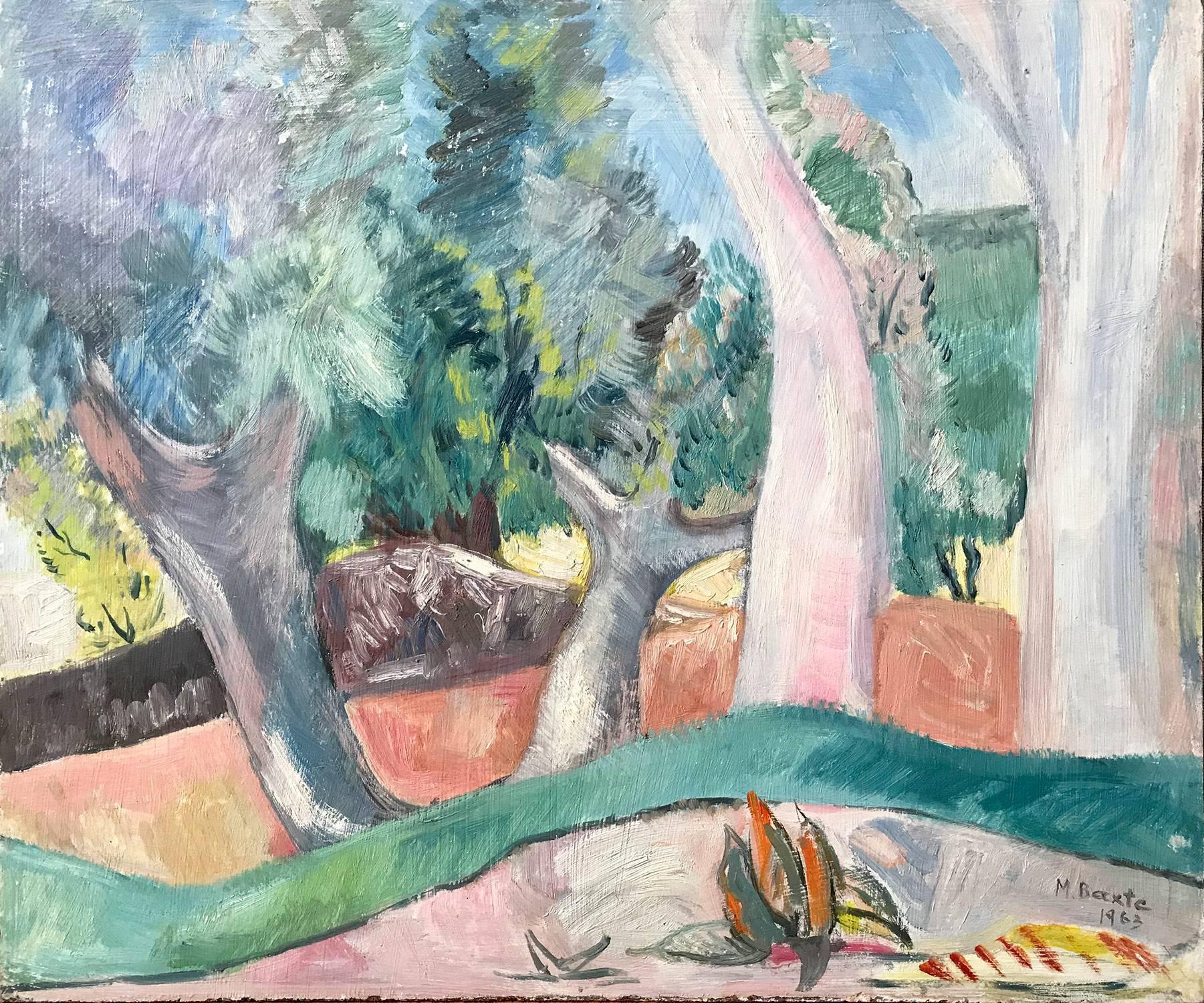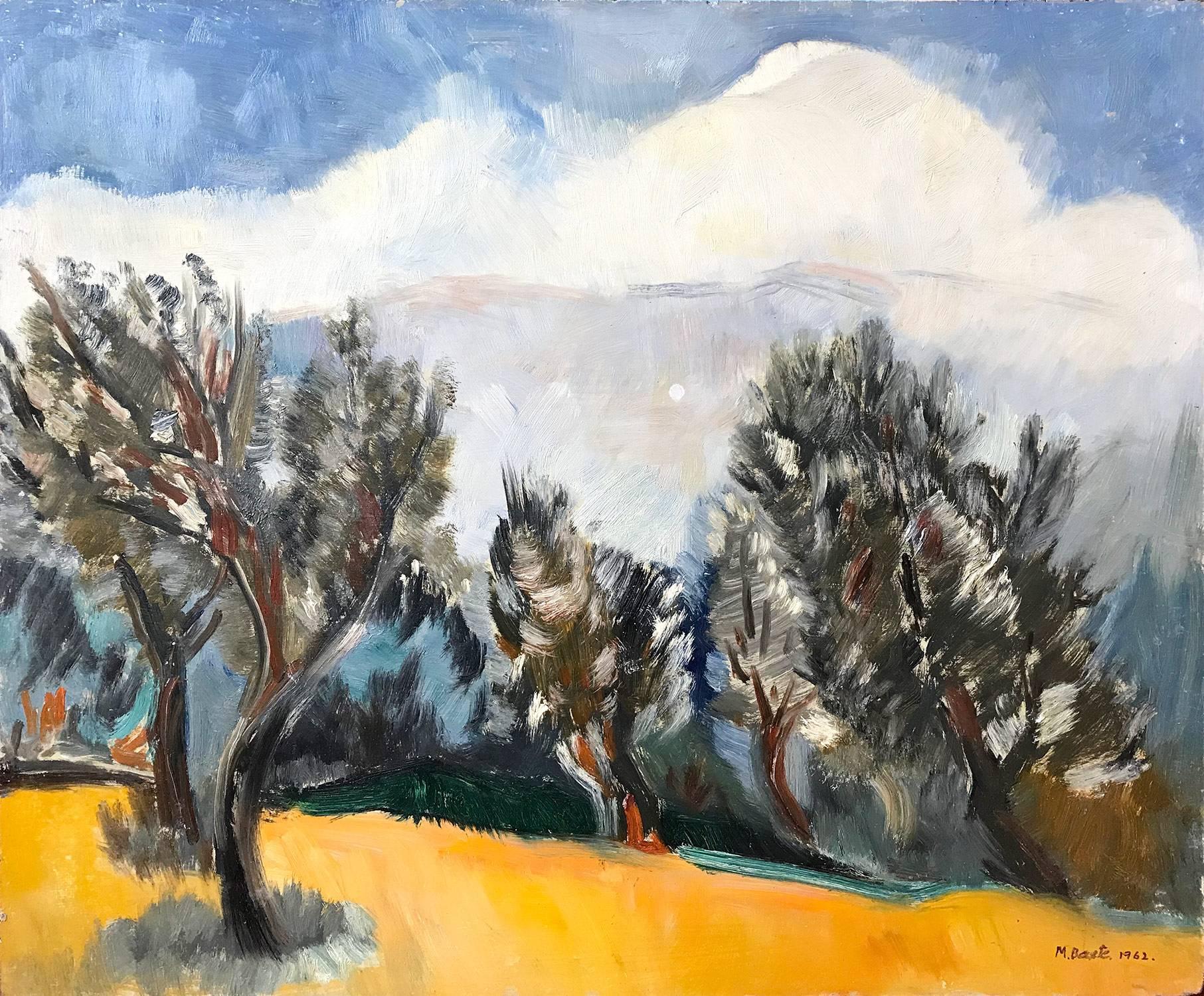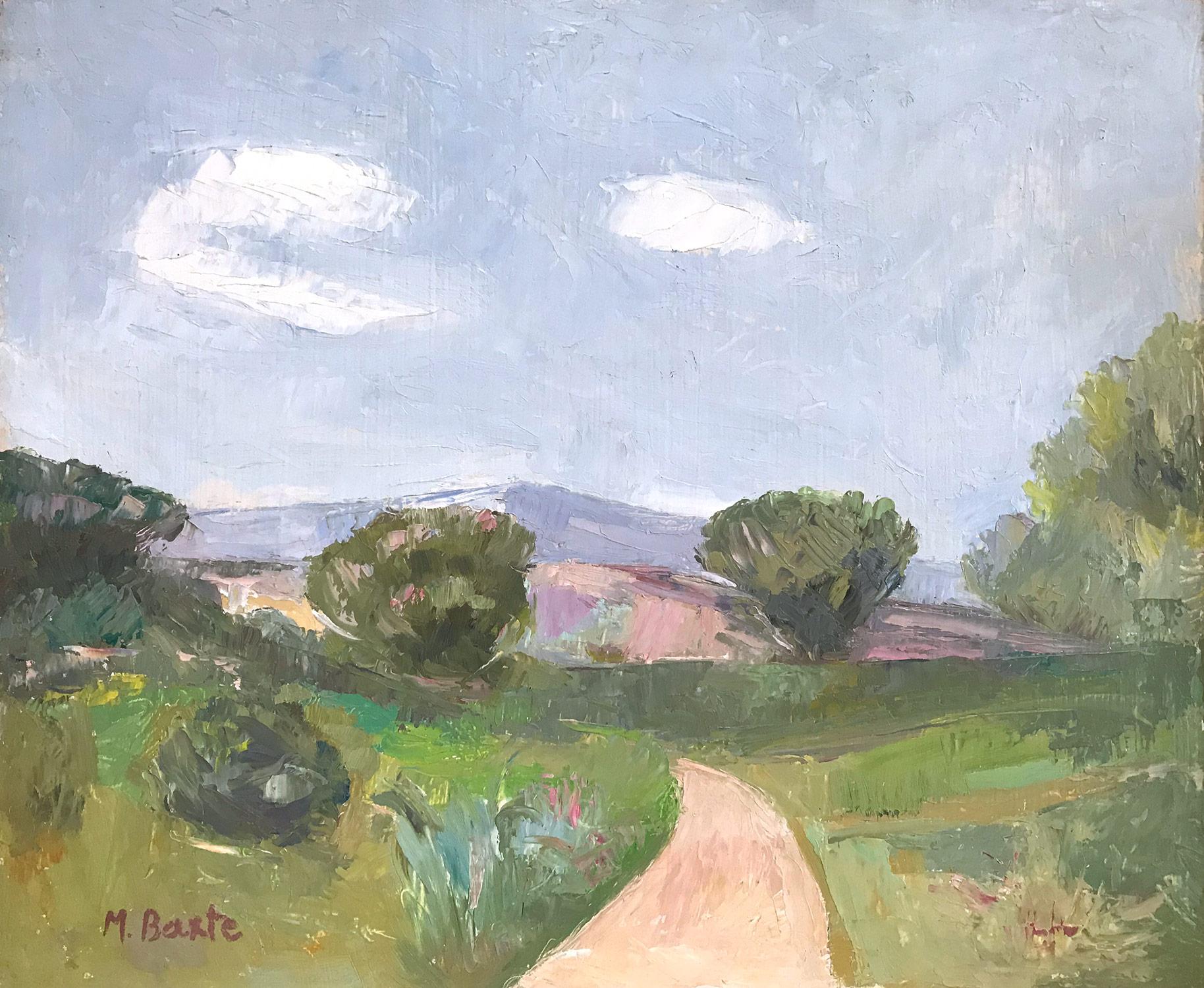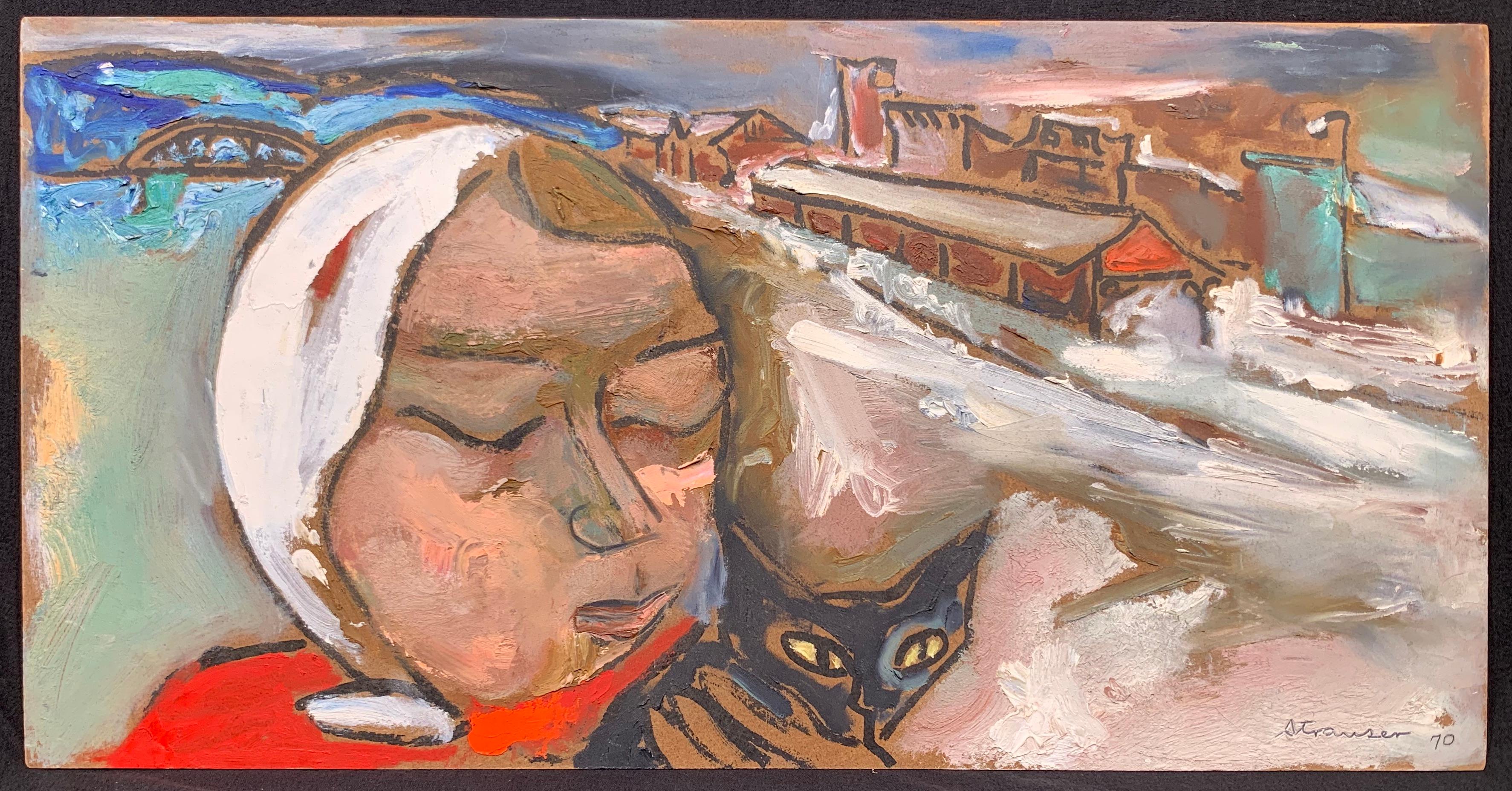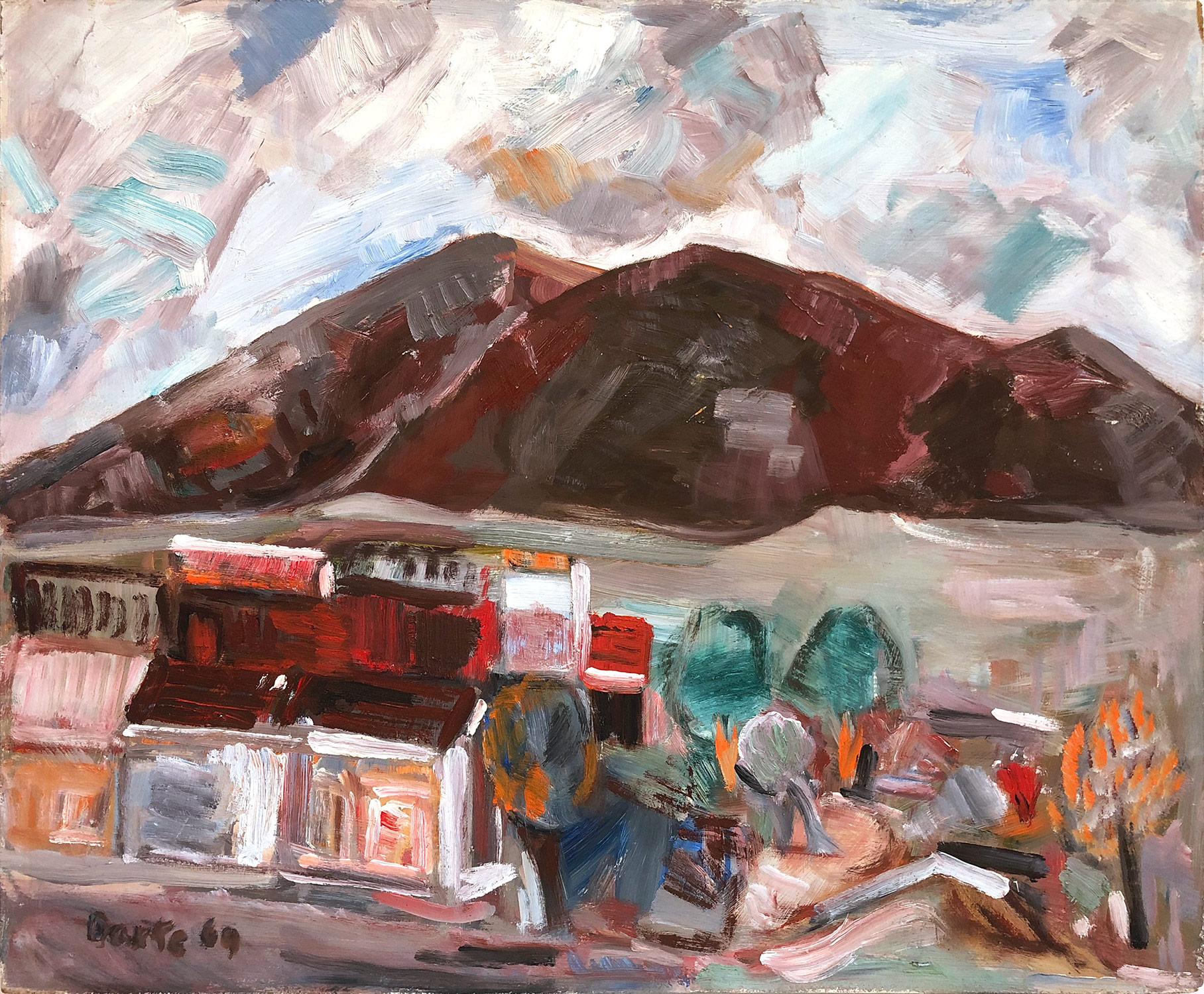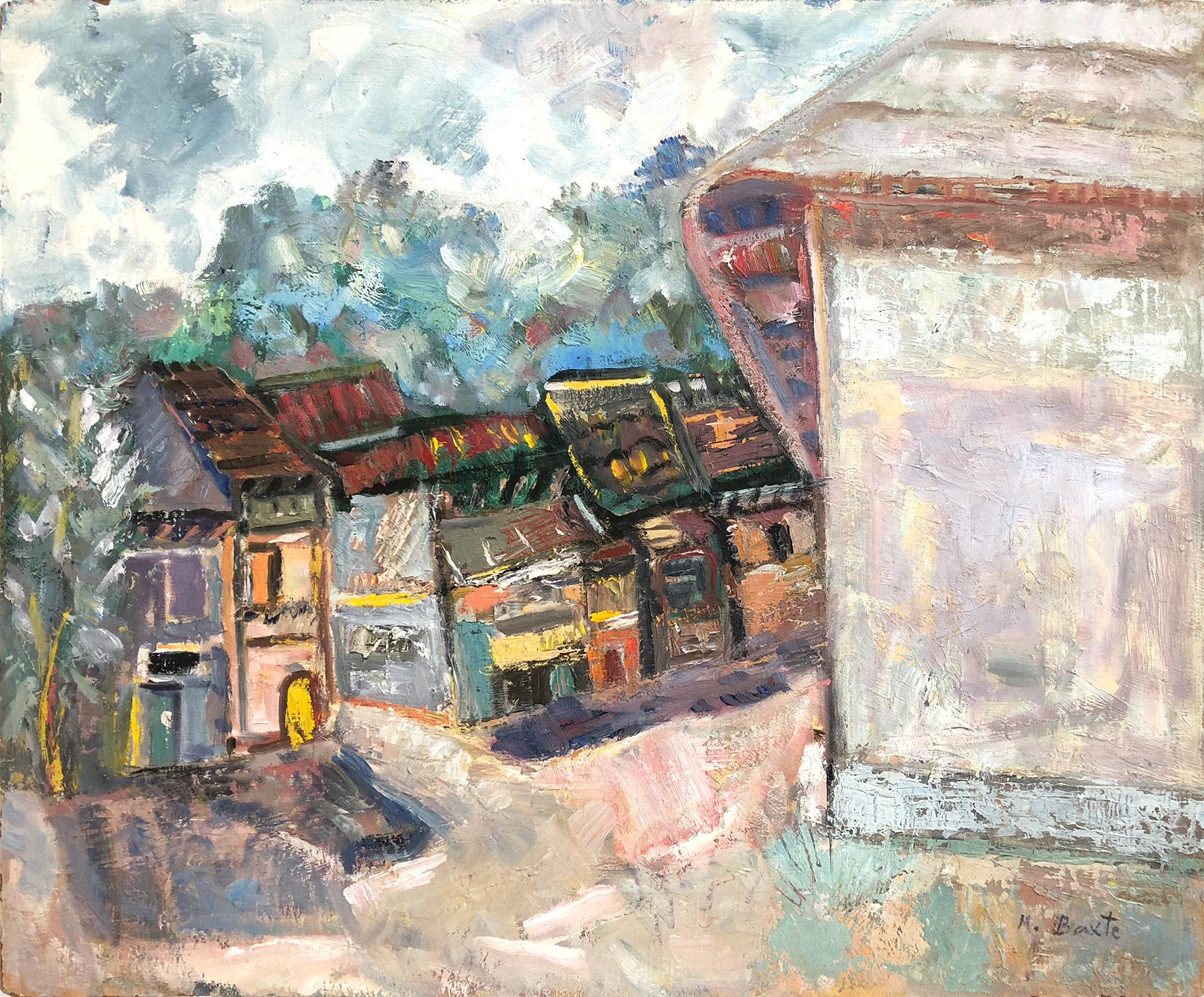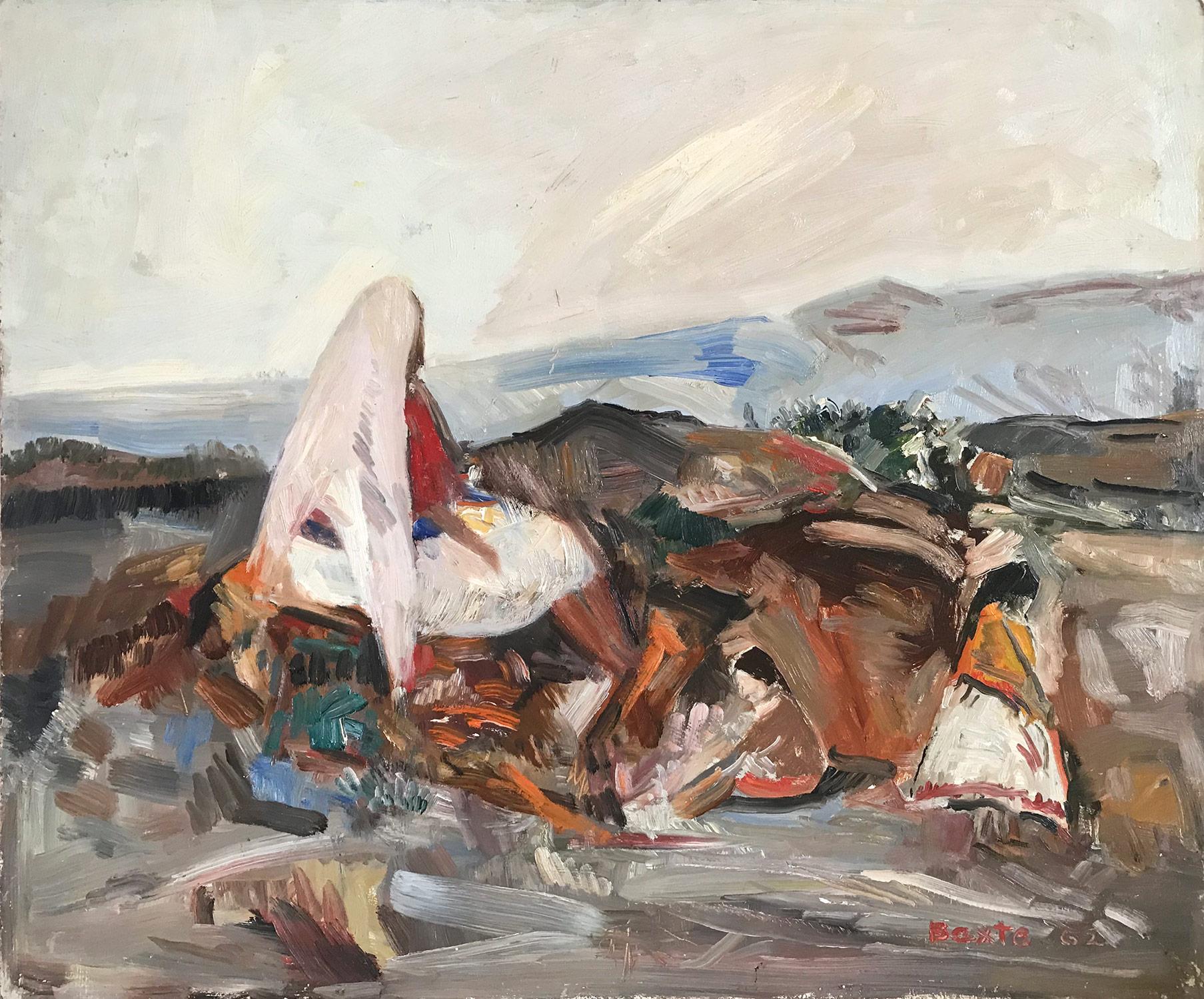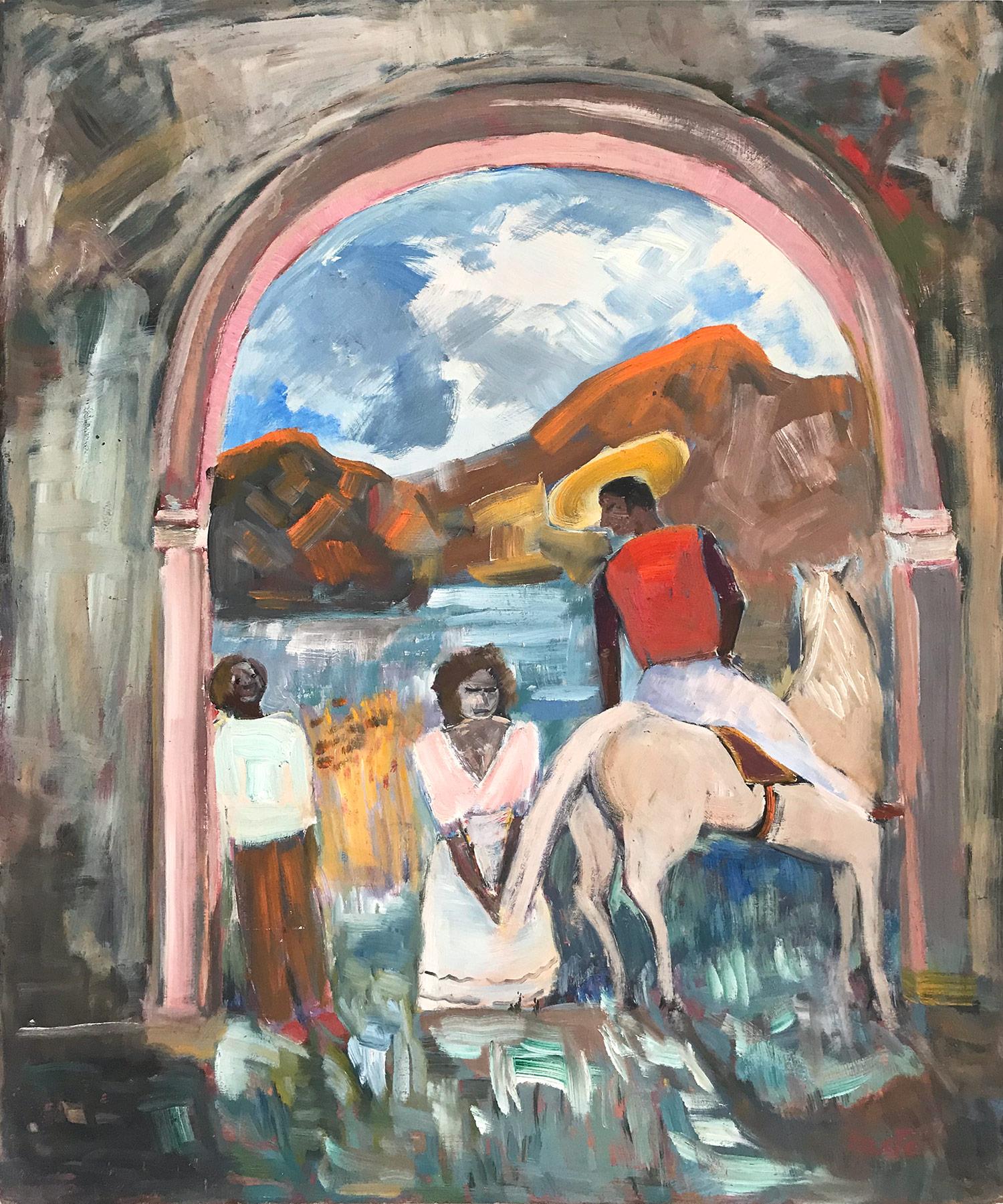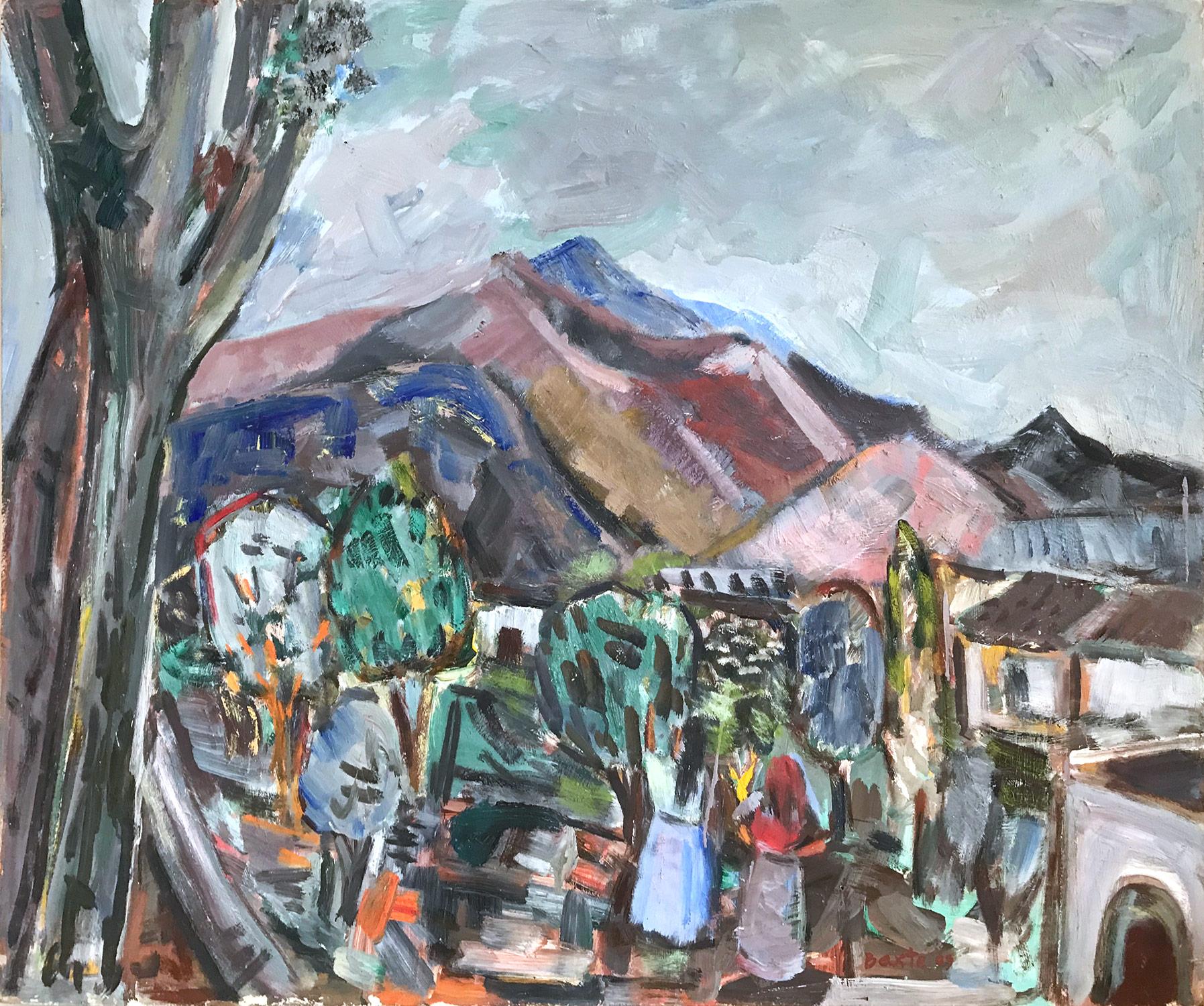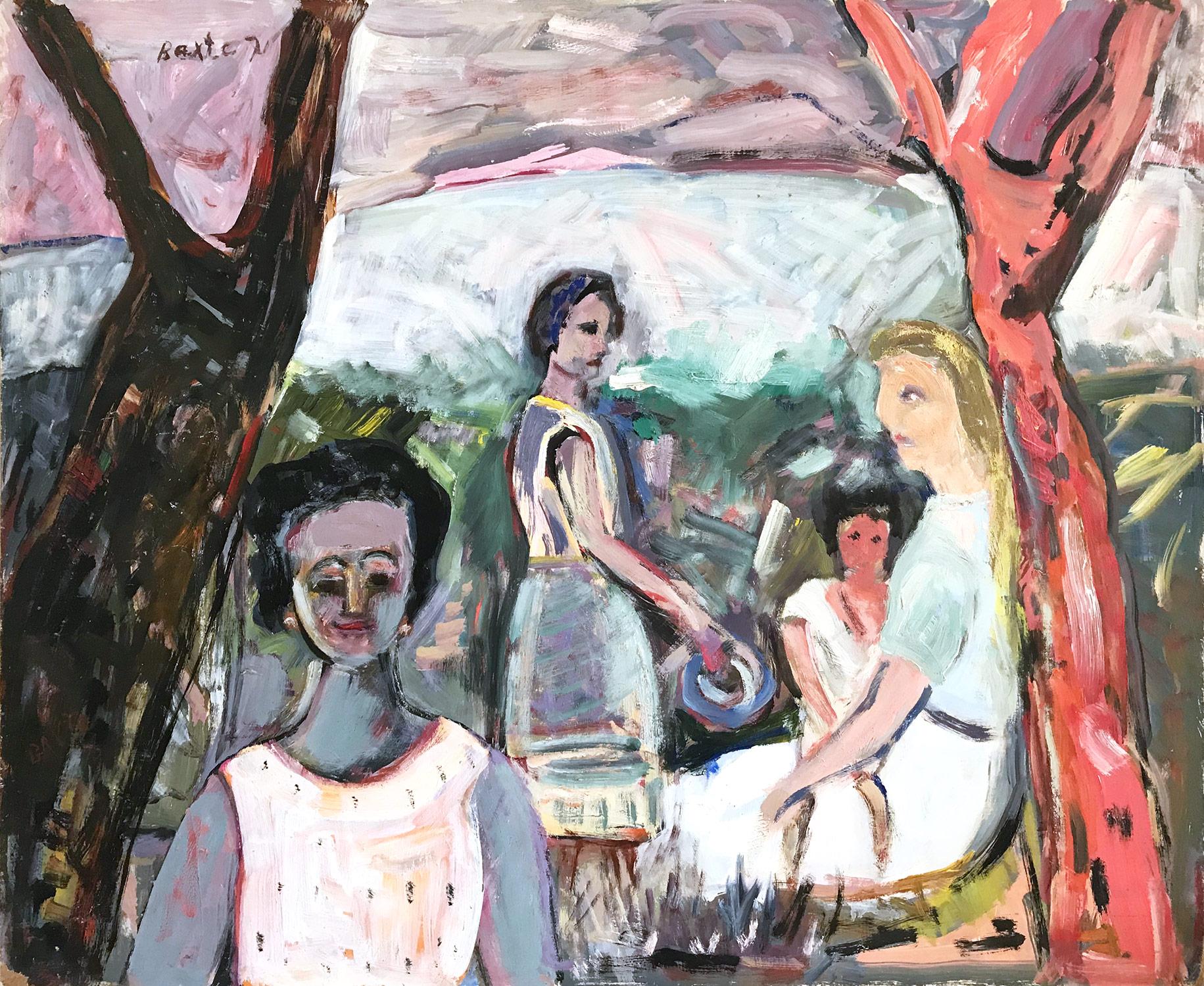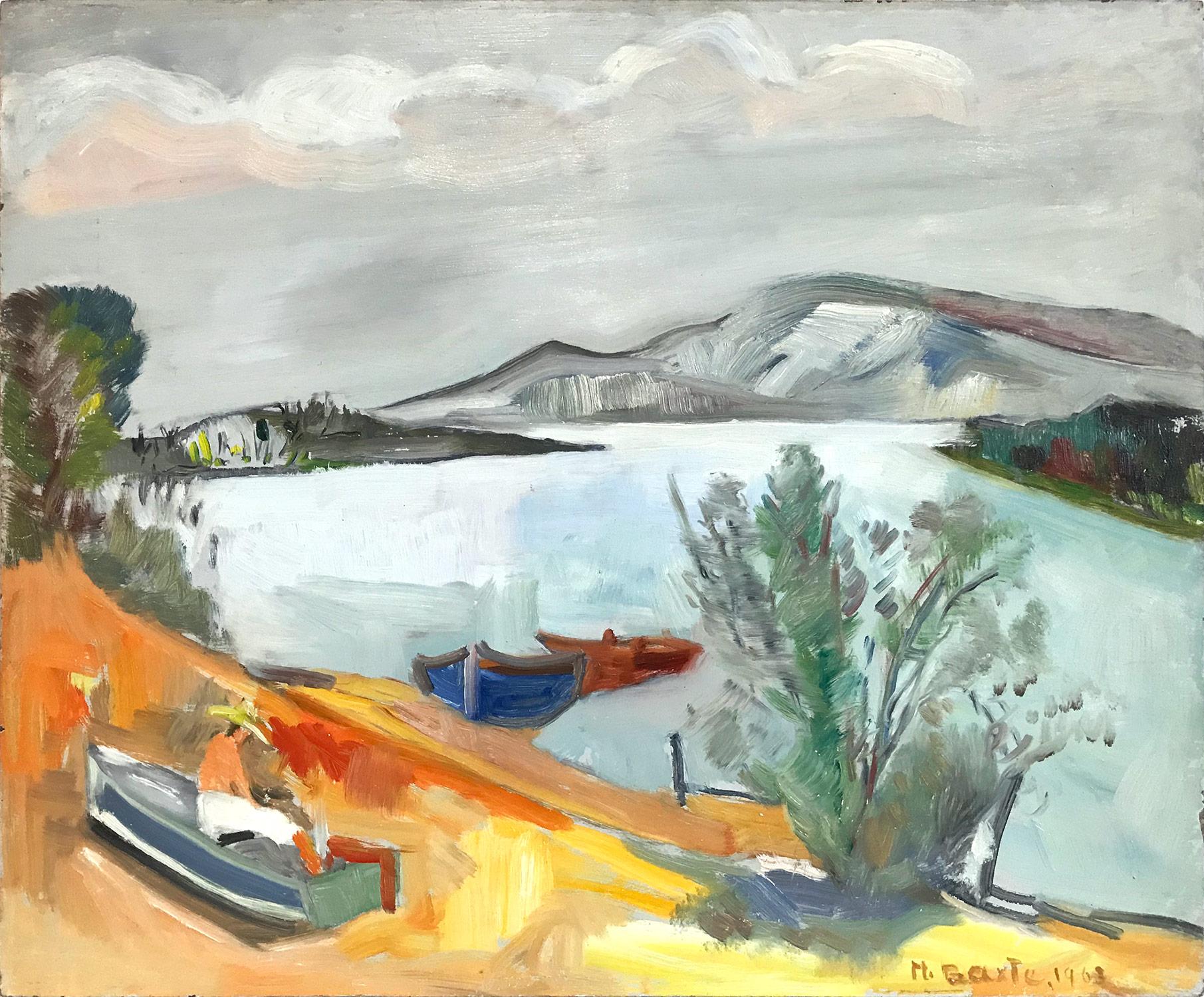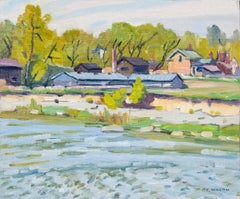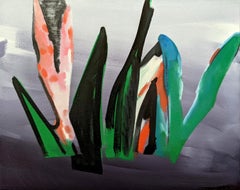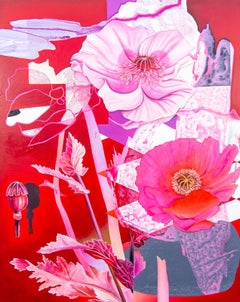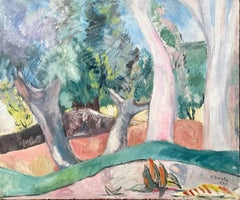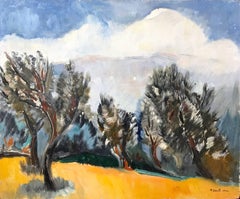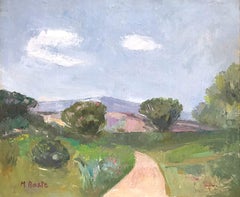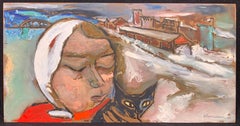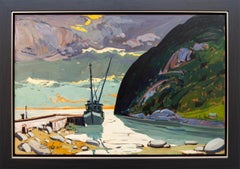
Lac St-Andre a Port au Persil - 20th century, expressionism, oil on board
View Similar Items
Want more images or videos?
Request additional images or videos from the seller
1 of 16
Bruno CôtéLac St-Andre a Port au Persil - 20th century, expressionism, oil on board1983
1983
About the Item
- Creator:Bruno Côté (1940 - 2010, Canadian)
- Creation Year:1983
- Dimensions:Height: 24 in (60.96 cm)Width: 36 in (91.44 cm)
- Medium:
- Movement & Style:
- Period:
- Condition:
- Gallery Location:Bloomfield, CA
- Reference Number:1stDibs: LU29110898102
About the Seller
4.9
Recognized Seller
These prestigious sellers are industry leaders and represent the highest echelon for item quality and design.
Platinum Seller
Premium sellers with a 4.7+ rating and 24-hour response times
Established in 2004
1stDibs seller since 2013
361 sales on 1stDibs
Authenticity Guarantee
In the unlikely event there’s an issue with an item’s authenticity, contact us within 1 year for a full refund. DetailsMoney-Back Guarantee
If your item is not as described, is damaged in transit, or does not arrive, contact us within 7 days for a full refund. Details24-Hour Cancellation
You have a 24-hour grace period in which to reconsider your purchase, with no questions asked.Vetted Professional Sellers
Our world-class sellers must adhere to strict standards for service and quality, maintaining the integrity of our listings.Price-Match Guarantee
If you find that a seller listed the same item for a lower price elsewhere, we’ll match it.Trusted Global Delivery
Our best-in-class carrier network provides specialized shipping options worldwide, including custom delivery.More From This Seller
View AllNear Woodbridge - historical, post-Impressionist, landscape, oil on board
By Bernice Fenwick Martin
Located in Bloomfield, ON
Romantic landscape, oil on panel. A saw mill is viewed from across a rapid river in this delightful scene near Woodbridge, Ontario, by Bernice Martin. Title, date on verso. This painting is unframed. Woodbridge, Ontario, is a settlement named in 1855 after a wooden bridge that crossed the Humber River as an entry point into the town. Martin's work is rooted in the post-Impressionist, atmospheric landscape style made well known by J.W. Beatty a forerunner to the Group of Seven.
“I look back on my life and my painting hours were the happiest. I’d spend long hours and forget time…my time was always measured by the passage of light.”
—Bernice Fenwick Martin
Born in Shelburne, Ontario, Bernice Martin studied at the Ontario College of Art under noted Canadian artists J.W. Beatty and Franklin Carmichael. After the death of Beatty in 1941, she found friendship in Peter Clapham Sheppard with whom she studied and worked with until his death in 1965. Working in oil, watercolor and woodcut, Martin focused on local scenes such as the Toronto harbor, small towns in Ontario and Northern landscapes including Muskoka, Haliburton, and Algonquin Park regions of Ontario.
Martin’s works were showcased at the Royal Canadian Academy from 1945-1947 and displayed in solo exhibitions in Toronto galleries throughout her career at T. Eaton Co...
Category
1940s Post-Impressionist Landscape Paintings
Materials
Oil, Board
Still Life (Study Of Leaves) - contemporary, still life, oil on canvas on panel
By Mel Davis
Located in Bloomfield, ON
This contemporary, still life, oil on canvas, on panel is by artist Mel Davis. In a style reminiscent of the French master Matisse, Montreal-born Mel Davis reinvents the traditional ...
Category
2010s Abstract Abstract Paintings
Materials
Canvas, Oil, Panel, Graphite
Book of Changes 2 - lively, abstracted, botanicals, acrylic and oil on canvas
By Fiona Ackerman
Located in Bloomfield, ON
Vancouver artist, Fiona Ackerman strays from botanical-themed compositions to explore the concepts of philosophy in this new abstract acrylic piece, one of two. Her colourful palette...
Category
2010s Contemporary Still-life Paintings
Materials
Canvas, Oil, Acrylic
Dream Flower - lively, fuscia, overlapping botanicals, acrylic, oil on canvas
By Fiona Ackerman
Located in Bloomfield, ON
With Dream Flower, Fiona Ackerman has painted a gorgeous ethereal abstract arrangement of brilliant pink, purple, mauve, orange flowers and organic shapes against a background of vib...
Category
2010s Contemporary Still-life Paintings
Materials
Canvas, Oil, Acrylic
Brighton - green, pink, blue, contemporary landscape, acrylic and resin on panel
By Peter Hoffer
Located in Bloomfield, ON
Peter Hoffer’s landscapes are ethereal, exquisite and masterful. The Canadian artist’s work has often been compared to the paintings rendered by the famed British artist, John Consta...
Category
2010s Contemporary Landscape Paintings
Materials
Epoxy Resin, Oil, Acrylic, Wood Panel
Parc - green, pink, blue, floral, landscape, acrylic, oil and resin on panel
By Peter Hoffer
Located in Bloomfield, ON
A spray of bright, flowering plants with a cultivated border are set against an expanse of tended, green lawn in this nostalgic image by Peter Hoffer. Titled 'Parc' the French spelli...
Category
2010s Contemporary Landscape Paintings
Materials
Epoxy Resin, Oil, Acrylic, Wood Panel
You May Also Like
"Mexican Countryside Landscape Scene with Trees on Hills" Expressionistic Style
By Michael Baxte
Located in New York, NY
A strong modernist oil painting depicted in 1963 by Russian painter Michael Baxte. Mostly known for his abstracted figures on canvas or street scenes, this piece is a wonderful repre...
Category
1960s Expressionist Landscape Paintings
Materials
Oil, Masonite
"Mexican Countryside Landscape Mountain Scene with Trees" Expressionistic Style
By Michael Baxte
Located in New York, NY
A strong modernist oil painting depicted in 1962 by Russian painter Michael Baxte. Mostly known for his abstracted figures on canvas or street scenes, this piece is a wonderful repre...
Category
1960s Expressionist Landscape Paintings
Materials
Oil, Masonite
"Countryside Landscape Hills Scene with Path" Expressionistic Style Oil Painting
By Michael Baxte
Located in New York, NY
A strong modernist oil painting depicted in the Mid Century by Russian painter Michael Baxte. Mostly known for his abstracted figures on canvas or street scenes, this piece is a wonderful representation of his landscapes with expressive use of color, shape, and form. Later in his career, Baxte explores Expressionism, infusing both European and North American stylistic trends.
Art measures 15 x 18 inches
Michael Posner Baxte was born in 1890 in the small town of Staroselje Belarus, Russia. For the first half of the 19th century, it was a center of the Chabad movement of Hasidic Jews, but this group was gone by the middle of the 19th century. By the time the Baxte family immigrated to the United States at the beginning of the 20th century, the Jewish population numbered only on the hundreds. The native language of the Baxte family was Yiddish. It is likely that the death of Michael Baxte’s father triggered the family’s immigration. Three older brothers arrived in New York between 1903 and 1905. Michael and his mother, Rebecca, arrived in 1907. By 1910 Michael, his mother, and brother, Joseph, were living in New Orleans and may have spent some time on a Louisiana plantation. Around 1912, Michael Baxte returned to Europe to study the violin. In 1914 he, his mother, and Joseph moved to New York City.
Meanwhile, in Algeria, a talented young woman painter, Violette Mege, was making history. For the first time, a woman won the prestigious Beaux Art competition in Algeria. At first, the awards committee denied her the prize but, with French government intervention, Mege eventually prevailed. She won again 3 years later and, in 1916, used the scholarship to visit the United States of America. When Violette came to New York, she met Baxte, who was, by then, an accomplished violinist, teacher, and composer. Baxte’s compositions were performed at the Tokyo Imperial Theater, and in 1922 he was listed in the American Jewish Yearbook as one of the prominent members of the American Jewish community. As a music teacher, he encouraged individual expression. Baxte stated, “No pupil should ever be forced into the imitation of the teacher. Art is a personal experience, and the teacher’s truest aim must be to awaken this light of personality through the patient's light of science.”
By 1920 Michael Baxte and Violette Mege were living together in Manhattan. Although they claimed to be living as husband and wife, it seems that their marriage did not become official until 1928. On their “unofficial” honeymoon around 1917, in Algiers, Baxte confided to her his ambition to paint. There and later in New Mexico where the wonderful steeped sunlight approximates the coloring of Algiers, she taught him his heart’s desire. He never had any other teacher. She never had any other pupil. For ten years she devoted all her time, energy, and ambition to teaching, encouraging, inspiring him. Then in 1928, their mutual strivings were rewarded, as his works were being chosen as one of the two winners in the Dudensing National Competition for American Painters. Out of 150 artists from across the country participated in the Dudensing, and Michael Posner Baxte and, Robert Fawcett...
Category
Mid-20th Century Expressionist Landscape Paintings
Materials
Oil, Masonite
Winter Walk with Jasper, (Black Cat painting)
By Sterling Boyd Strauser
Located in Wilton Manors, FL
Sterling Strauser (1907-1995). Dorothy and Jasper, Crystal Street Station, 1970. Oil on masonite panel, 11.5 x 22.25 inches. Signed and dated lower right. Very good condition with no damage or conservation. Unframed. Framing services available.
Image depicts the artist's wife, Dorothy Strauser, walking the beloved family cat, Jasper. In the background can be seen the East Stroudsburg Pa Train Depot on Crystal Street.
Provenance: Estate of the artist's Granddaughter, Princeton NJ.
Often called a romantic expressionist and American intimist, self-taught Pennsylvania artist Sterling Strauser (1907-1995) completed his first oil painting in 1922- inspired by frequent visits to the collection of American folk art at the Everhardt Museum in Scranton. Throughout the following seven decades of his career, Strauser’s artistic pursuit was based on his own intuition and determination to paint what he saw, rather than adhering to the conventional pictorial structures prescribed by prevailing styles at the time. Strauser rejected pretension, believing instead that art should work from life as it was lived. His oeuvre therefore serves as an extremely personal record of his observations and experiences from his lifetime painting in East Stroudsburg, Pennsylvania.
Beginning early in his career, Strauser took his inspiration from American regionalists and traditional realists in the Ashcan style, as well as European movements such as Fauvism and Cubism, yet he eventually developed his own fluid realism based on subject matter beloved and familiar to him- family and friends, local landscapes and floral still lifes.
Known for his distorted pictorial space, exaggerated with vivid color, heavy impasto and an intensity of emotion, Strauser was adept at altering and rearranging the details and aspects of any given form to create a new kind of beauty.
"All a painting has to do, or a piece of sculpture, or whatever, is to entertain the critical eye. You have to have a fresh seeing eye… to look at things like a child, as if looking at the world for the first time (seeing) something that somebody else doesn’t see, something you want to identify with… Painting is largely a matter of evaluation. (It) doesn’t matter how much it looks like the subject matter. It just depends on how interesting you have made it so that it pleases the critical eye."
STERLING STRAUSER, STERLING STRAUSER: A MODERNIST REVISTED, P. 23
Sterling exhibited his work extensively throughout the country and drew the attention of many notable fellow artists including Milton Avery, Louise Nevelson, David Burliuk, Chaim Gross and Red Grooms. Sterling was also extremely influential within the arts community of Pennsylvania through his discovery and promotion of self-taught American Folk artists such as Justin McCarthy, Jack Savitsky, Joseph Gatto...
Category
Mid-20th Century Expressionist Landscape Paintings
Materials
Masonite, Oil
$3,000 Sale Price
25% Off
"Landscape of a Village Near Mountains" Expressionistic Oil Painting on Masonite
By Michael Baxte
Located in New York, NY
A strong modernist oil painting depicted in 1969 by Russian painter Michael Baxte. Mostly known for his abstracted figures on canvas or street scenes, this piece is a wonderful representation of his bold still life paintings, with expressive use of color, shape, and form. Later in his career, Baxte explores Expressionism, infusing both European and North American stylistic trends. This piece is from later in his career, but we can feel this underlying style throughout.
Art measures 18 x 21.75 inches
Michael Posner Baxte was born in 1890 in the small town of Staroselje Belarus, Russia. For the first half of the 19th century it was a center of the Chabad movement of Hasidic Jews, but this group was gone by the middle of the 19th century. By the time the Baxte family immigrated to the United States at the beginning of the 20th century, the Jewish population numbered only on the hundreds. The native language of the Baxte family was Yiddish. It is likely that the death of Michael Baxte’s father triggered the family’s immigration. Three older brothers arrived in New York between 1903 and 1905. Michael and his mother, Rebecca, arrived in 1907. By 1910 Michael, his mother, and brother, Joseph, were living in New Orleans and may have spent some time on a Louisiana plantation. Around 1912, Michael Baxte returned to Europe to study the violin. In 1914 he, his mother, and Joseph moved to New York City.
Meanwhile, in Algeria, a talented young woman painter, Violette Mege, was making history. Since for the first time, a woman won the prestigious Beaux Art competition in Algeria. At first, the awards committee denied her the prize but, with French government intervention, Mege eventually prevailed. She won again 3 years later and, in 1916, used the scholarship to visit the United States of America. When Violette came to New York, she met Baxte, who was, by then, an accomplished violinist, teacher, and composer. Baxte’s compositions were performed at the Tokyo Imperial Theater, and in 1922 he was listed in the American Jewish Yearbook as one of the prominent members of the American Jewish community. As a music teacher he encouraged individual expression. Baxte stated, “No pupil should ever be forced into imitation of the teacher. Art is a personal experience, and the teacher’s truest aim must be to awaken this light of personality through the patient light of science.”
By 1920 Michael Baxte and Violette Mege were living together in Manhattan. Although they claimed to be living as husband and wife, it seems that their marriage did not become official until 1928. On their “unofficial” honeymoon around 1917, in Algiers, Baxte confided to her his ambition to paint. There and later in New Mexico where the wonderful steeped sunlight approximates the coloring of Algiers, she taught him his heart’s desire. He never had any other teacher. She never had any other pupil. For ten years she devoted all her time, energy, and ambition to teaching, encouraging, inspiring him. Then in 1928, their mutual strivings were rewarded, as his works were being chosen as one of the two winners in the Dudensing National Competition for American Painters. Out of 150 artists from across the country participated in the Dudensing, and Michael Posner Baxte and, Robert Fawcett, were the winners.
In his 1924 naturalization application, he indicated that he was sometimes known as “Michael Posner Baxte.” One of the witnesses to his application was Bernard Karfiol, a Jewish American artist. That’s when Michael may...
Category
1960s Expressionist Landscape Paintings
Materials
Oil, Masonite
"Landscape Scene of Mexican Villagers" Expressionistic Oil Painting on Masonite
By Michael Baxte
Located in New York, NY
A strong modernist oil painting depicted in 1971 by Russian painter Michael Baxte. Mostly known for his abstracted figures on canvas or street scenes, this piece is a wonderful representation of his landscape paintings, with expressive use of color, shape, and form. Later in his career, Baxte explores Expressionism, infusing both European and North American stylistic trends. This piece is from later in his career, but we can feel this underlying style throughout.
Art measures 18 x 21.75 inches
Michael Posner Baxte was born in 1890 in the small town of Staroselje Belarus, Russia. For the first half of the 19th century it was a center of the Chabad movement of Hasidic Jews, but this group was gone by the middle of the 19th century. By the time the Baxte family immigrated to the United States at the beginning of the 20th century, the Jewish population numbered only on the hundreds. The native language of the Baxte family was Yiddish. It is likely that the death of Michael Baxte’s father triggered the family’s immigration. Three older brothers arrived in New York between 1903 and 1905. Michael and his mother, Rebecca, arrived in 1907. By 1910 Michael, his mother, and brother, Joseph, were living in New Orleans and may have spent some time on a Louisiana plantation. Around 1912, Michael Baxte returned to Europe to study the violin. In 1914 he, his mother, and Joseph moved to New York City.
Meanwhile, in Algeria, a talented young woman painter, Violette Mege, was making history. Since for the first time, a woman won the prestigious Beaux Art competition in Algeria. At first, the awards committee denied her the prize but, with French government intervention, Mege eventually prevailed. She won again 3 years later and, in 1916, used the scholarship to visit the United States of America. When Violette came to New York, she met Baxte, who was, by then, an accomplished violinist, teacher, and composer. Baxte’s compositions were performed at the Tokyo Imperial Theater, and in 1922 he was listed in the American Jewish Yearbook as one of the prominent members of the American Jewish community. As a music teacher he encouraged individual expression. Baxte stated, “No pupil should ever be forced into imitation of the teacher. Art is a personal experience, and the teacher’s truest aim must be to awaken this light of personality through the patient light of science.”
By 1920 Michael Baxte and Violette Mege were living together in Manhattan. Although they claimed to be living as husband and wife, it seems that their marriage did not become official until 1928. On their “unofficial” honeymoon around 1917, in Algiers, Baxte confided to her his ambition to paint. There and later in New Mexico where the wonderful steeped sunlight approximates the coloring of Algiers, she taught him his heart’s desire. He never had any other teacher. She never had any other pupil. For ten years she devoted all her time, energy, and ambition to teaching, encouraging, inspiring him. Then in 1928, their mutual strivings were rewarded, as his works were being chosen as one of the two winners in the Dudensing National Competition for American Painters. Out of 150 artists from across the country participated in the Dudensing, and Michael Posner Baxte and, Robert Fawcett, were the winners.
In his 1924 naturalization application, he indicated that he was sometimes known as “Michael Posner Baxte.” One of the witnesses to his application was Bernard Karfiol, a Jewish American artist. That’s when Michael may...
Category
1960s Expressionist Landscape Paintings
Materials
Oil, Masonite
Recently Viewed
View AllMore Ways To Browse
String Art Vintage
Cote Oil Painting
Vintage Frames Montreal
Boats On A Dock Oil Painting
Canadian Rockies Paintings
Fishing Boats On The Dock
Arthur Lismer
Bruno Cote
Marc Aurele Fortin
Sunset River Painting
Bp Painting
Edinburgh Landscape
Great Camp
Oil Painting With Jewels
Railway Sign
Texas Western Painting
19 Century American Portraits
1940 California Landscape
